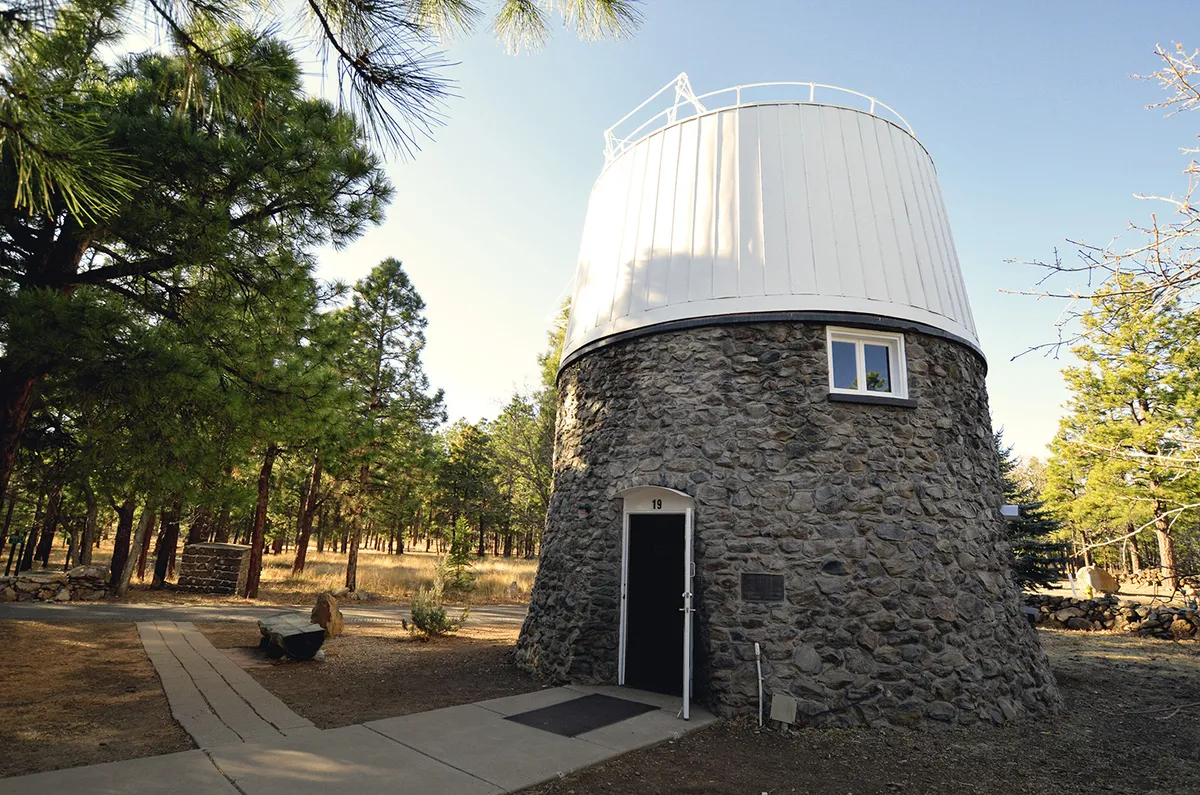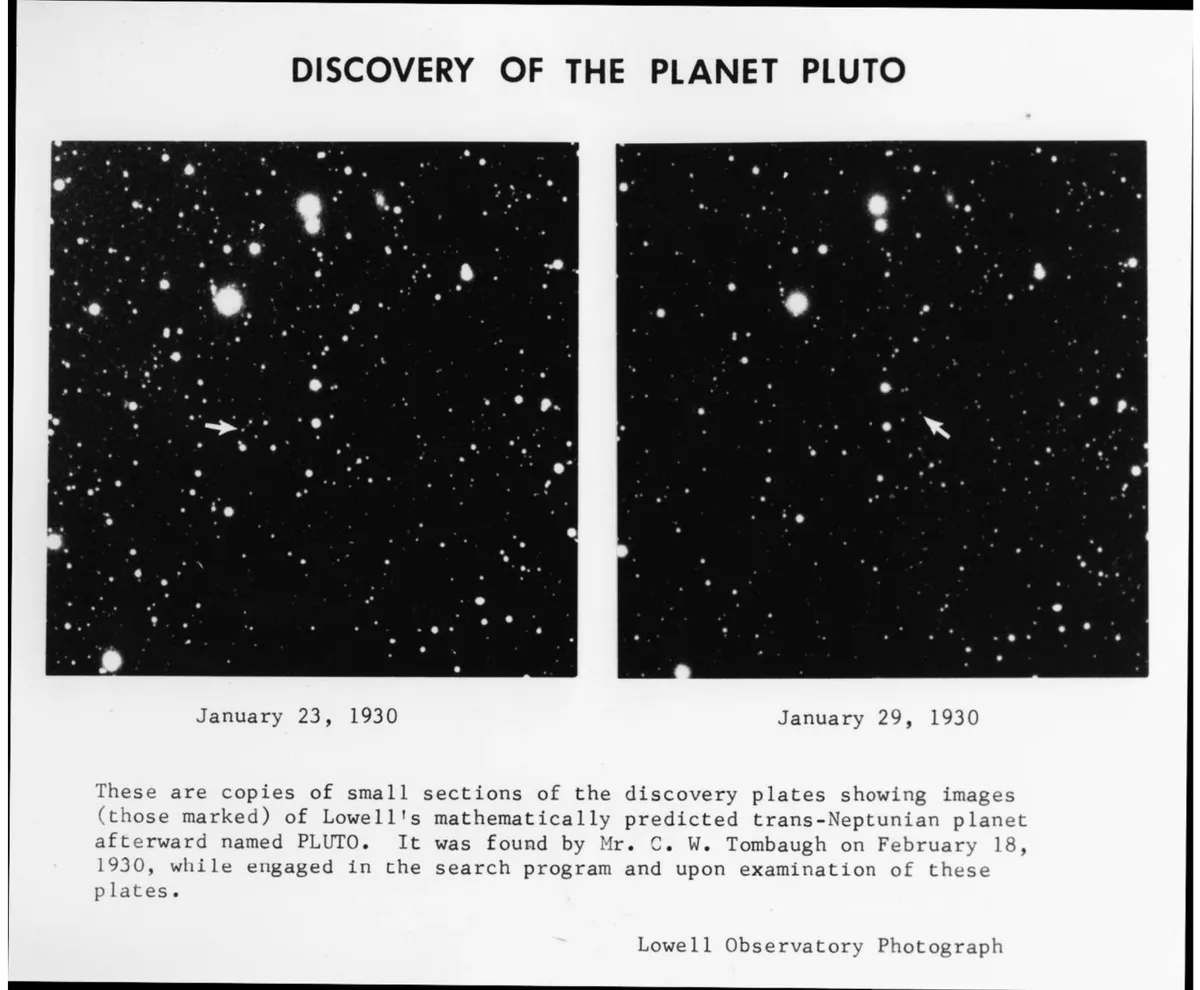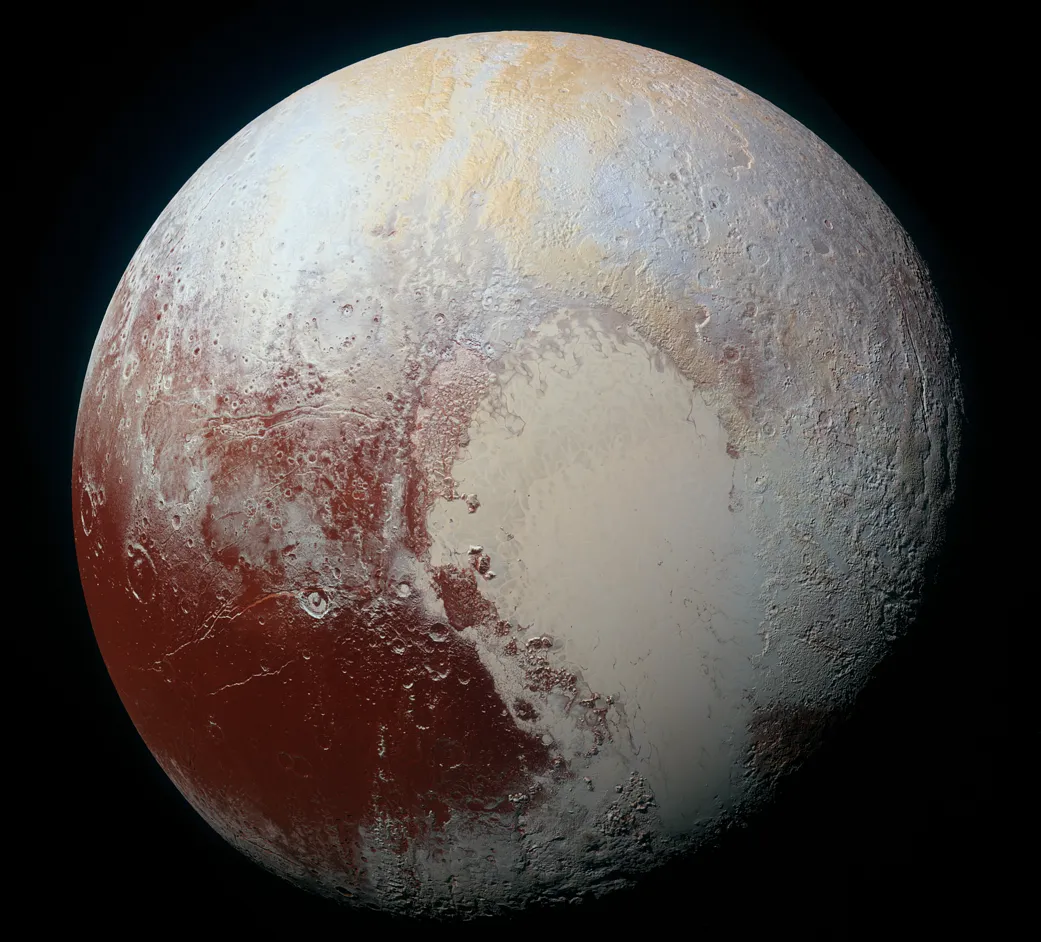Dwarf planet Pluto was discovered by Clyde Tombaugh at Lowell Observatory in Flagstaff, Arizona, US on 18 February 1930.
Though he would go on to earn degrees in astronomy from the University of Kansas, at the time he was a young amateur astronomer who lacked any formal astronomy training.
Tombaugh was born in 1906 to a farming family that moved to Kansas in 1922, when he was 16.
A hailstorm one year devastated the farm’s crops, causing a financial burden that prevented his family from sending him to college.
But that didn’t deter him from pursuing astronomy on his own. When he was 20 he built his first telescope and over the next two years he learnt how to grind and test optics, then designed and built two more.
He used the last of these, a 9-inch Newtonian reflector built in 1928, to make detailed drawings of Mars and Jupiter, which he sent to several observatories for feedback.
Explained: Why is Pluto not a planet?

The drawings impressed the Lowell Observatory director at the time, Vesto Slipher, so much that he hired Tombaugh as an assistant and groundskeeper and brought him to Flagstaff in January 1929.
How Clyde Tombaugh discovered Pluto
Meanwhile, Lowell Observatory had been preparing to begin a third search for ‘Planet X’, a body that Percival Lowell had theorised must exist beyond the orbit of Neptune.
Percival had died in 1916 and his brother, A Lawrence Lowell, then president of Harvard University, funded the construction in 1927 of a 13-inch wide-field astrograph and its dome.
The new astrograph saw first light in February 1929 and the third search for Planet X began with it on 6 April 1929.
The search for Planet X was tedious, but it was a welcome departure from Tombaugh’s groundskeeping role, which included stoking stoves with coal and shovelling snow off the various telescope domes.
Each exposure took on average one hour, during which Tombaugh continuously kept the instrument centred on a guide star in order to ensure that star images were not distorted.
Each evening yielded a handful of photographs, which Tombaugh developed during the day.
Searching the plates for Pluto
Then the most challenging work began, as the star fields were examined for points that moved over time.
The photographs taken with the 13-inch astrograph had a wide field of 12x15°, capturing on average 300,000 stars on each 14x17-inch plate. Tombaugh would compare the same star fields, captured several days apart, using a Zeiss blink comparator.
When aligned and blinked back and forth, the two frames revealed non-stellar objects as points of light that moved against the comparatively stationary star field.

After 10 months of monotonous searching, on 18 February 1930 Tombaugh found a point of light that was moving at the right speed to be a trans-Neptunian planet.
The two plates he was comparing had been taken on 23 and 29 January, so he anxiously awaited clear, dark skies to confirm the current position of the suspected planet.
Revealing Pluto to the world
Over the next several weeks, Tombaugh and his colleagues took new photographs and examined old plates to confirm the discovery.
The new planet was announced to the world on 13 March 1930, the day that would have been Percival Lowell’s 75th birthday.
On the following day, The New York Times headline proclaimed: “Ninth Planet Discovered on Edge of Solar System: First Found in 84 Years.”
Pluto, it turned out, was too small to be Planet X, so its discovery was yet another happy accident of scientific inquiry.
Tombaugh continued to search for additional planets beyond Neptune at Lowell until 1945, discovering new asteroids, variable stars and galaxies along the way.
Distant Pluto remained largely an enigma until 2015, when the New Horizons mission captured detailed images of the planet for the first time.
Tombaugh having died in 1997, a portion of his ashes were carried aboard the New Horizons spacecraft as it sped past Pluto, and the large heart-shaped region of Pluto was named Tombaugh Regio in his honour.
Today, visitors to Lowell Observatory, ‘the Home of Pluto’, can retrace Tombaugh’s steps from the Slipher Building, which houses the blink comparator, to the Pluto Dome and the 13-inch astrograph, both of which were fully restored in 2018.

Venetia Burney: the English girl who named Pluto
Not only was Pluto discovered by a young amateur astronomer, credit for its name goes to Venetia Burney, an 11-year-old girl from Oxford in the UK.
After hearing news of the new discovery, she became the first to suggest the name ‘Pluto’, after the Roman god of the underworld.
Her grandfather shared the name with an Oxford astronomer, who sent a brief telegram to Lowell Observatory on 16 March: “Naming new planet please consider Pluto, suggested by small girl, Vebtia Nurney [sic], for dark gloomy planet.”
Pluto was announced as the name for the new planet on 1 May 1930. The first two letters of ‘Pluto’ evoked the initials of Percival Lowell and so they were combined to form Pluto’s astronomical symbol.
Dr Danielle Adams is a cultural astronomer and deputy director at Lowell Observatory in Flagstaff, Arizona. For more on the story of Pluto, visit lowell.edu.
This article originally appeared in the February 2020 issue of BBC Sky at Night Magazine.